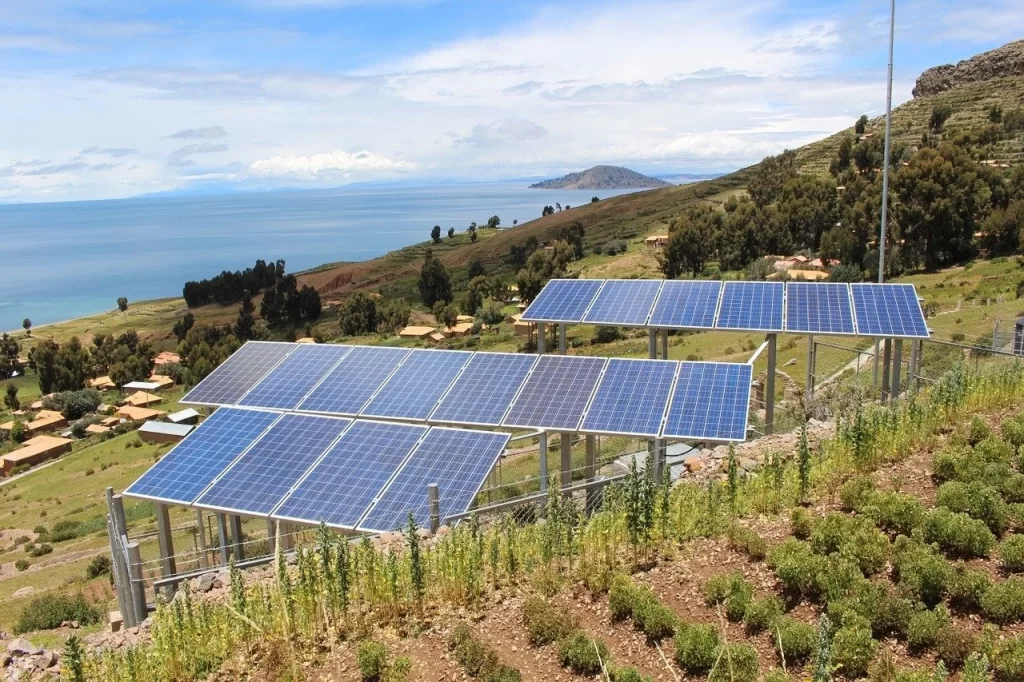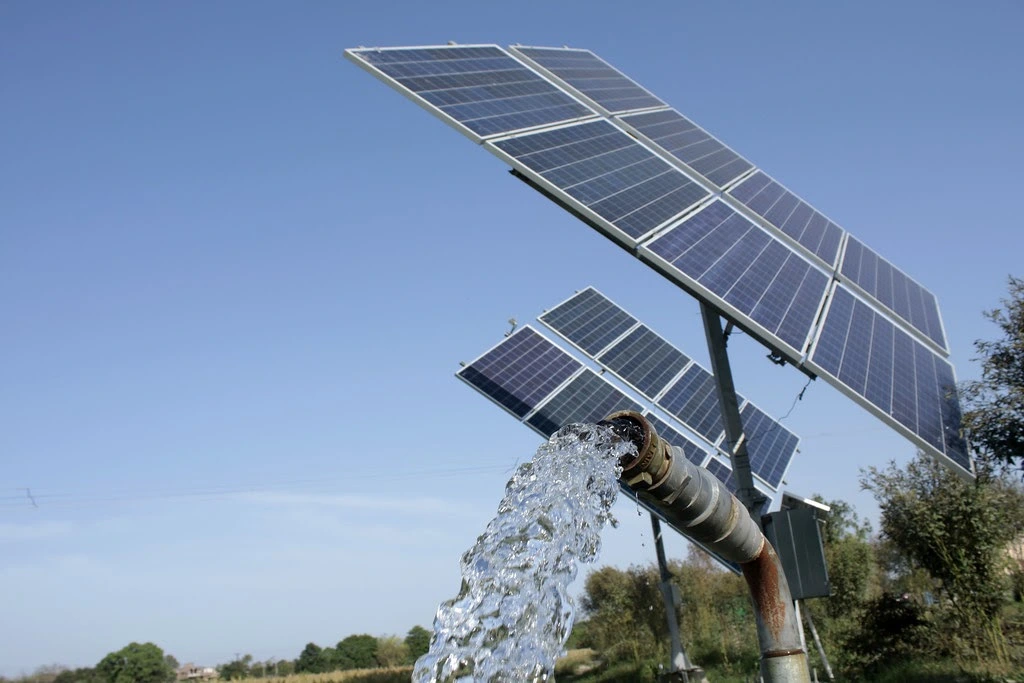The sun has been around longer than anything in this world, and it is what keeps the world going around. The early human civilization was built on agricultural practices around 10,000 years ago. People settled around river banks for easy irrigation and used solar techniques to guide themselves in crop rotation and harvesting.
A lot of things have changed ever since the first agricultural civilization happened. Along with the rapid technological advancements that we have witnessed in the past few decades, the agriculture sector has benefited significantly in terms of innovation. In this context, the solar irrigation system is one of the recent developments.
See our related article on the Pros and Cons of Solar Energy as a whole. There are some similar debates relating to Solar Irrigation.
Table of Contents
- Lifeblood of Agriculture
- Solar Irrigation System – Cleaner and Greener
- Pros of Solar Irrigation System (Advantages)
- Cons of Solar Irrigation System (Disadvantages)
- Doing More with Less
Lifeblood of Agriculture
The water and Irrigation system is the lifeblood of agriculture. According to the World Bank, the productivity of irrigated land is two times greater than that of non-irrigated land and three times the productivity of rain-fed land.
However, a well-structured water pumping and distribution through the irrigation system requires a reliable and consistent energy source. Solar irrigation system marks the major shift from fossil fuel-based technology to a cleaner and greener energy in agriculture.
Solar Irrigation System – Cleaner and Greener
Solar radiation is the most abundant source of energy in the world. The solar-based irrigation system has emerged as the most suitable alternative for the farmers facing energy crises around the world. While it solves the problem of energy, it also contributes to environmental protection by promoting the use of cleaner, greener, and renewable energy solutions. Needless to say, solar irrigation system doesn’t produce any greenhouse gas emissions.
Solar irrigation systems might be a real deal to the farmers where they don’t have access to a reliable electricity grid, and fossil fuel is expensive. But this climate-friendly energy solution isn’t free from its limitations. So there’s always a trade-off involved. It requires some extent of technical knowledge on the part of farmers to manage and regulate it effectively. Failure to do so may lead to unsustainable use of water resources, especially groundwater.
Let’s talk about the pros and cons of solar irrigation systems in detail.
Pros of Solar Irrigation System (Advantages)
1. Renewable Source of Energy

Solar-powered irrigation technology has gained momentum worldwide as a part of strategies to promote a climate-friendly and renewable source of energy. Unlike fossil fuels and other non-renewable sources of energy, the sun will not stop blazing anytime soon in the future.
Solar energy can be used to overcome the existing energy shortages prevalent in our daily lives. Batteries can be used to store surplus energy for later use.
2. Reduced Fuel or Electricity Costs
Solar energy is a cheaper and efficient alternative to fossil fuels and electricity. Let’s face it! Small-scale farmers can’t afford expensive diesel fuel to power their water pumps and irrigation system throughout the year. Furthermore, the prices of fuels are subject to market conditions.
Electricity may seem like a better alternative to diesel fuel, but most farmers in rural areas don’t have reliable access to the electricity grids. Solar energy can either replace or at least cut down the farmers’ dependency on the costly and inaccessible source of energy to power their water distribution facility.
Countries without their oil reserves can save billions of dollars by promoting the use of solar energy in their irrigation system.
3. Flexibility and Accessibility
The latest innovation in the solar power industry has made its technology accessible to all scales of agriculture in the world. It can be easily set up and operated from anywhere globally as long as the sunlight reaches there.
Furthermore, it allows all types of farmers to customize the irrigation system according to their needs. A small-scale irrigation system can be set up with very less initial investment cost, which can be upgraded later as per the requirement.
4. Low Maintenance Costs
Lesser the moving parts, the lower the wear and tear. That’s how solar irrigation systems are designed to go on for decades with minimum maintenance costs. Periodic checks and cleaning are more than enough to keep the system working without any technical issues. The warranty period for most of the solar panels in the industry ranges from 20-25 years.
5. Multi-Purpose Application
The energy generated from the solar irrigation system isn’t limited to irrigation purposes only. When there is no need for irrigation, the surplus solar energy can be used for other purposes, like running mills, water filtration plants, cold storage units, etc. The excess power can also be sold to the power company by connecting to the electricity grid.
6. Self-Regulated Irrigation
The solar irrigation system is more than just a solar panel and water pump used for irrigation. The latest developments in solar-powered irrigation systems allow for self-regulated irrigation of the land-based on the environmental conditions, crop water requirements, and water availability.
This system takes into account the multiple factors to regulate water pumping and distribution to increase agricultural productivity without compromising on the sustainability of the available water resources.
Cons of Solar Irrigation System (Disadvantages)
1. High Initial Cost

Even though solar irrigation system is considered to be an accessible and cost-effective alternative to fuel or electricity, the initial cost for material and installation of the system is relatively high. The cost of installation is directly related to the scale of the irrigation system. Unlike with electricity grids, the farmers have to bear the cost for solar panels, inverters, batteries, wiring, and installation by themselves.
However, governments are introducing favorable policy subsidy schemes for the promotion of solar energy in the irrigation sector. At the same time, recent advancements in solar technology and mass production are bringing the prices down.
2. Weather-Dependent
The dark side to being dependent on sunlight for energy is that it is non-functional at night. The efficiency of the solar system is weather-dependent. It works at full capacity only when the sky is clear and sunny. The solar panels can still collect energy during cloudy days, but lower production of energy and the drop in the efficiency of the system is largely noticeable under such weather conditions.
Alternatively, thermodynamics panels can collect heat from the ambient condition, even during the night and winter. However, its use is limited to basic indoor heating only and may not be powerful enough for irrigation purposes.
3. Needs More Space
A number of solar panels are required to generate enough energy to power the entire irrigation system. These solar panels are generally bulky and take up more space. Space management becomes critical in solar irrigation systems because the panels need should be appropriately positioned so that they get maximum exposure to the sunlight.
4. Impact on the Environment
Even though solar energy is considered to be a clean and climate-friendly source of energy, it is not free from its environmental footprint.
Its impact on the environment can be traced back to the manufacturing process where toxic and hazardous products are used. Furthermore, the transportation and installation of bulky solar panels are responsible for the emission of greenhouse gases. However, its contribution to clean energy movement adequately compensates for its indirect impact on the environment.
5. Higher Energy Storage Costs
Solar energy works on the real-time principle, i.e., it works as long as the sun is out there. The energy generated during the daytime can be stored in batteries for later (nighttime) use.
But the cost associated with installing large batteries for power storage is higher than using electricity from the grid. So rather than resorting to solar energy as a sole source of power to the irrigation system, it’s smarter to have grid electricity, just in case!
6. Unsustainable Groundwater Extraction
The solar irrigation system has solved the problem of energy shortages to some extent. However, it is attributed to causing unsustainable groundwater extraction if not adequately managed or regulated.

Solar irrigation system frees the farmer from any additional cost per unit of power. As a result, they become “extravagant” in the use of water resources. This leads to over-exploitation of underground water reserves, which can be a serious problem in the long term.
This problem can be solved with effective monitoring and governance of underground water extraction through the solar irrigation system.
Doing More with Less
The solar-powered irrigation system is the new face of smart agriculture practice made possible by innovation. It allows the farmer to do more with less. The effect is threefold: Save Water. Save Money. Save Energy.
Although these systems are quite expensive and require some technical knowledge, countries suffering from high temperatures and scarce water resources can benefit from efficient water management. Furthermore, the governments have favored this technology with policies and mechanisms to reach farmers facing irrigation problems due to energy shortages.
However, the solar irrigation system is not a standalone system. It is smarter to integrate solar energy with the electricity grid so that there is no shortage of power. The irrigation system is the engine of agriculture, and energy is what keeps it running. An integrated approach to this water-energy-food triangle should drive the next innovation in the solar-powered irrigation system.

